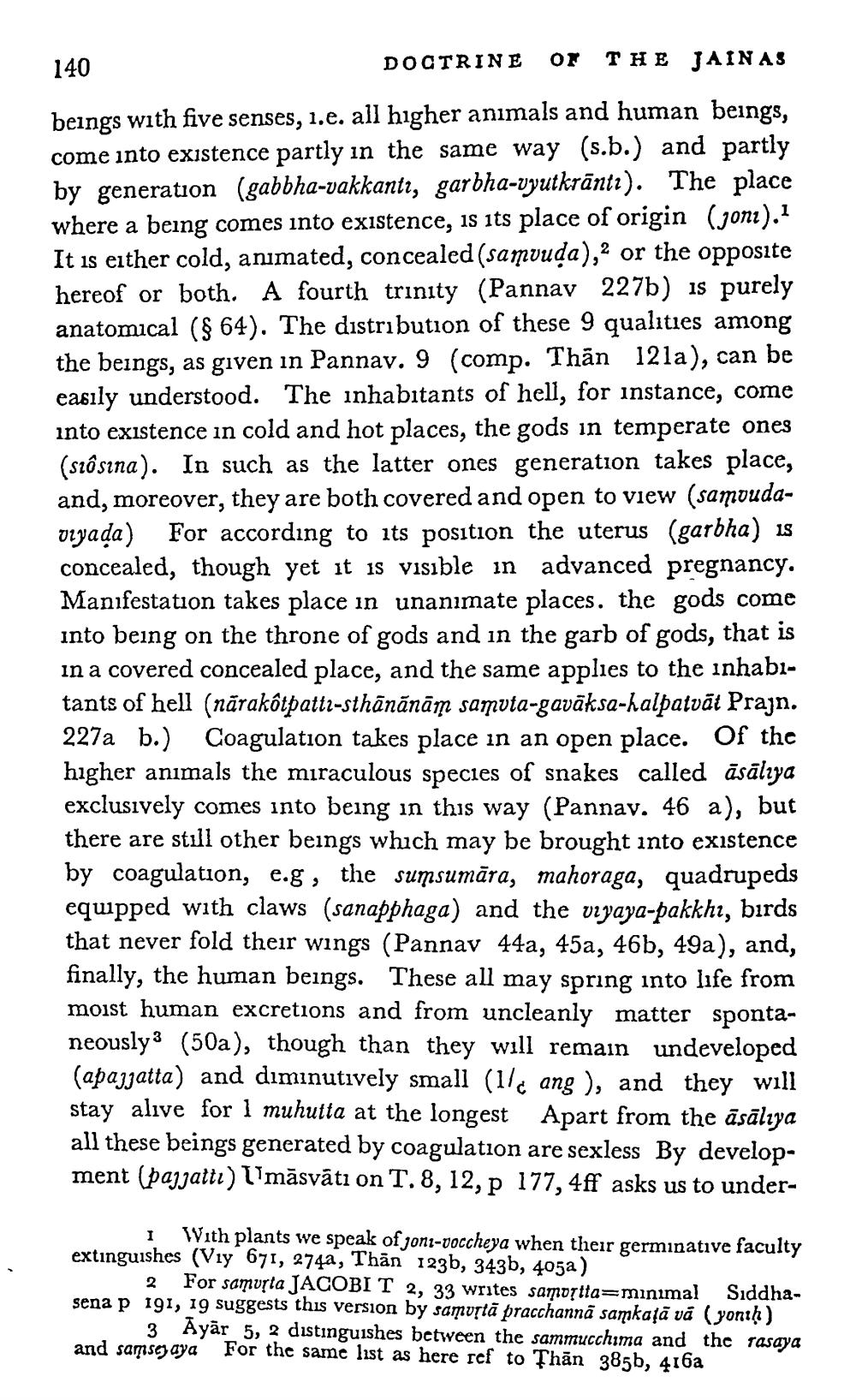________________
140
DOCTRINE OF THE JAINAS beings with five senses, 1.e. all higher animals and human beings, come into existence partly in the same way (s.b.) and partly by generation (gabbha-vakkantı, garbha-vyutkrāntz). The place where a being comes into existence, is its place of origin (joni).1 It is either cold, animated, concealed (samvuda), or the opposite hereof or both. A fourth trinity (Pannav 227b) is purely anatomical ($ 64). The distribution of these 9 qualities among the beings, as given in Pannav. 9 (comp. Thân 121a), can be easily understood. The inhabitants of hell, for instance, come into existence in cold and hot places, the gods in temperate ones (szô sina). In such as the latter ones generation takes place, and, moreover, they are both covered and open to view (samvudadiyada) For according to its position the uterus (garbha) is concealed, though yet it is visible in advanced pregnancy, Manifestation takes place in unanimate places. the gods come into being on the throne of gods and in the garb of gods, that is in a covered concealed place, and the same applies to the inhabitants of hell närakótpattz-sthānānām samuta-gavāksa-halpatvāt Prajn. 227a b.) Coagulation takes place in an open place. Of the higher animals the miraculous species of snakes called āsālıya exclusively comes into being in this way (Pannav. 46 a), but there are still other beings which may be brought into existence by coagulation, e.g, the sumsumāra, mahoraga, quadrupeds equipped with claws (sanapphaga) and the viyaya-pakkhi, birds that never fold their wings (Pannav 44a, 45a, 46b, 49a), and, finally, the human beings. These all may spring into life from moist human excretions and from uncleanly matter spontaneously3 (50a), though than they will remain undeveloped (apazjatta) and diminutively small (1lc ang ), and they will stay alive for 1 muhutta at the longest Apart from the āsālıya all these beings generated by coagulation are sexless By development (pajzattı) limāsvāti on T. 8, 12, p 177,4ff asks us to under
I With plants we speak of honi-voccheya when their germinative faculty extinguishes (Vzy 671, 274a, Thân 123b, 343b, 405a)
2 For samvíta JACOBI T 2, 33 writes samostta=minimal Siddhasena p 191, 19 suggests this version by samostā pracchannā samkajā vá (yonih)
3 Ayar 5, 2 distinguishes between the sammucchima and the rasaya and samsey aya For the same list as here ref to Thăn 385b, 416a
onih
?pracchannā samkață vă
and somi
y ar 5, ? distinguishes he




